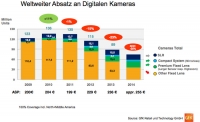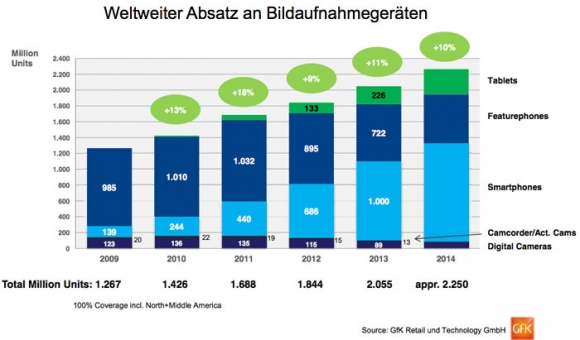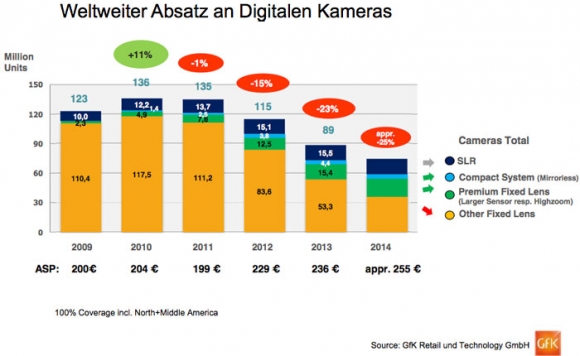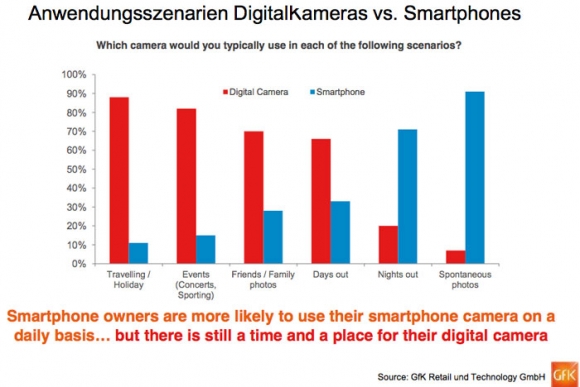Mirrorless cameras and premium compacts are on the rise, despite a shrinking camera market
posted Monday, June 9, 2014 at 8:12 AM EST

The camera market is changing, and it has been for a while. We've written about this topic multiple times in the past; sometimes looking at the market in general, sometimes focusing on individual manufacturers. But the general trend in the past years is that digital camera sales are on the decline, all over the world, and for all types of cameras. Now the German photo industry association (Photoindustrie-Verband) has visualized recent numbers by market research agency GfK, and they show some interesting developments.
According to GfK and the Photoindustrie-Verband, one of the biggest factors contributing to the decline of camera sales are, and have been for years, smartphones. Looking at the figures, the shrinking of the digital camera market is in direct relation to the ever-growing smartphone and tablet market. Among all image capturing devices, smartphones have had by far the biggest chunk of overall sales in the last two years, with numbers still growing. Among digital cameras, however, not all devices are experiencing the same kind of decline in sales.

The category that was, and still is, most affected by the dwindling digital camera sales is that of the point-and-shoots, which have virtually been replaced by smartphones in the past years. At the same time, however, premium compacts with advanced features such as larger sensors and large-aperture lenses have been on the rise, gaining strongly in popularity. The market for interchangeable-lens cameras has been relatively steady, with DSLRs slowly losing ground to mirrorless cameras. However, the former are still more popular than the latter in most markets.

The GfK did not only collect numbers, though–they also did a little consumer research and tried to find out what it is exactly that people use their smartphones for, and what reasons they have to use a (more advanced) digital camera. While smartphones are mostly used for spontaneous snaptshots day-in, day-out, digital cameras see the most use during vacations and in scenarios where a smartphone doesn't cut it technically. Which is also the reason why most smartphone users upgrade to dedicated digital cameras: 44% claim they do it because they want the best possible image quality.

What we can take away from this research is basically that in the past couple of years, the change in the camera market is in direct relation to changes in consumer behaviour as well as technological advances. The space of the casual camera has been filled by the ubiquitous -- and, quite frankly, much more useful multi-purpose–smartphone -- while dedicated solutions such as interchangeable-lens cameras still enjoy the same popularity. At the same time, the market for premium compacts grew because even the best smartphone camera quickly reaches the limits of its capabilities.
For the near future, the Photoindustrie-Verband expects the current trend to continue, which means that manufacturers have to adapt. Some have already axed a good part of their point-and-shoot portfolio, while others have been trying to reinvent the point-and-shoot camera to make it more attractive again. In the long run, however, we think that the two biggest segments for image taking devices will be portable devices such as smartphones and tablets vs. dedicated solutions such as mirrorless cameras and DSLRs, with some minor niches in-between.
(via photoscala via Mirrorless Rumors)